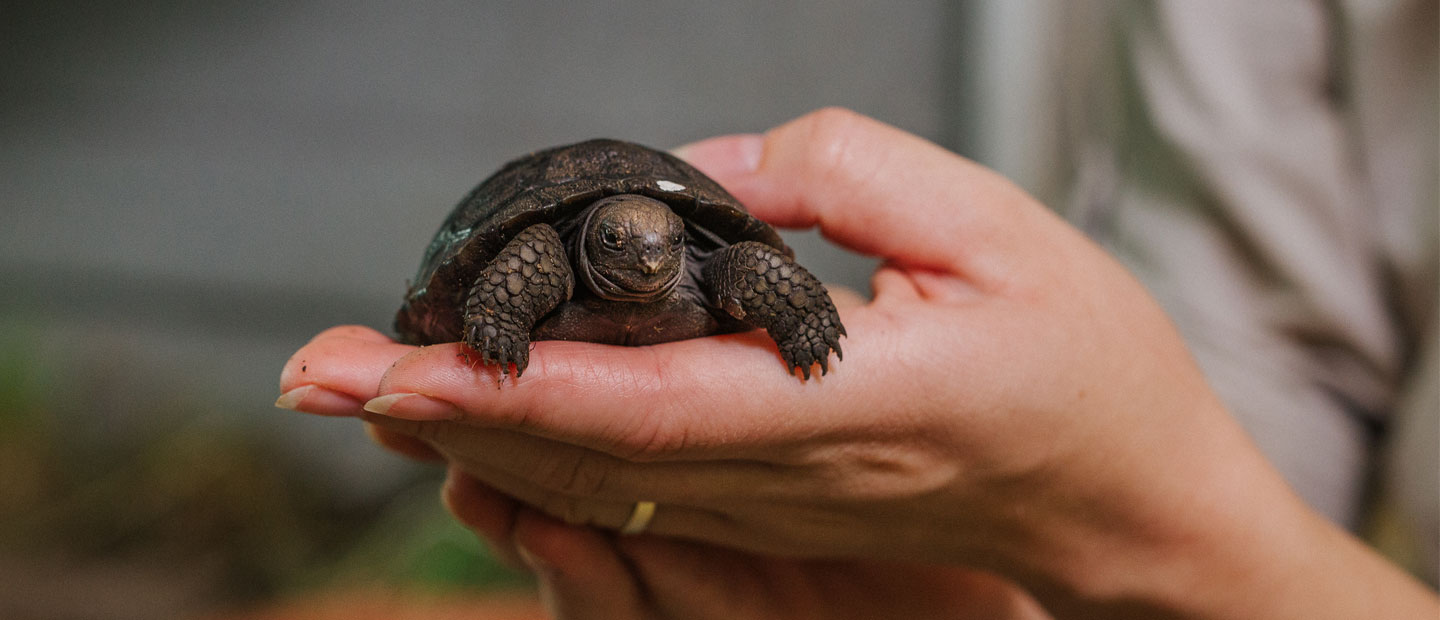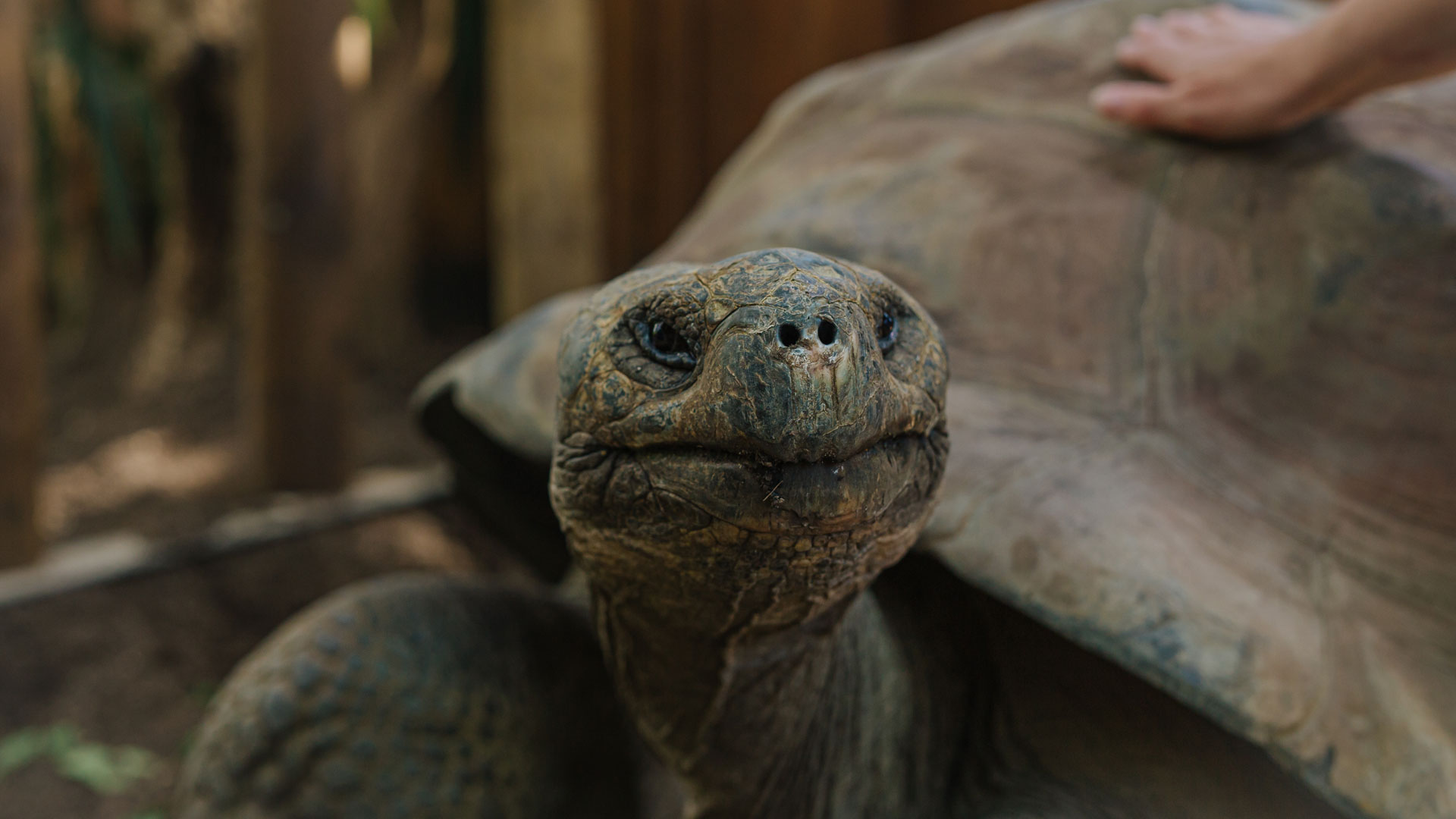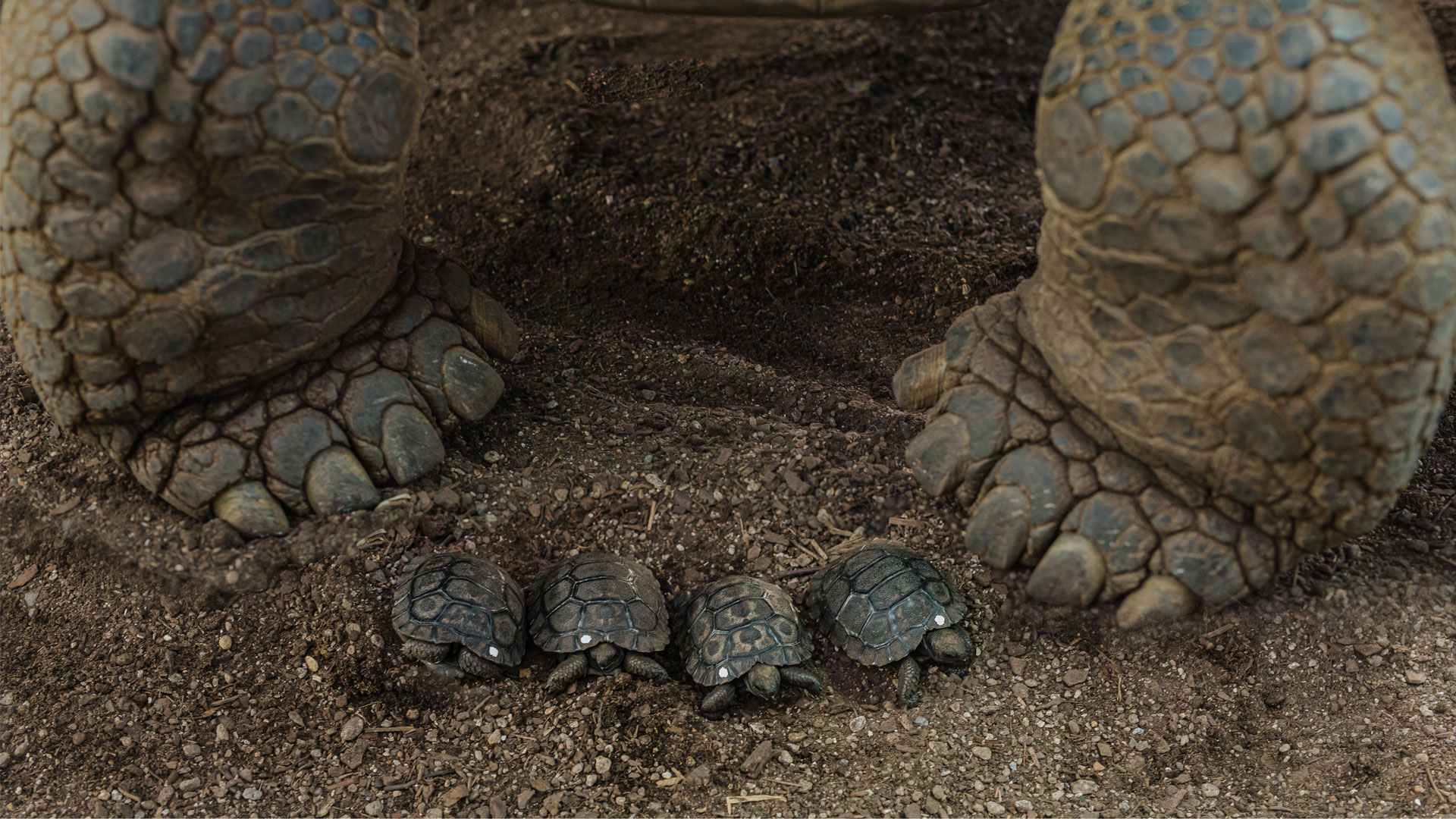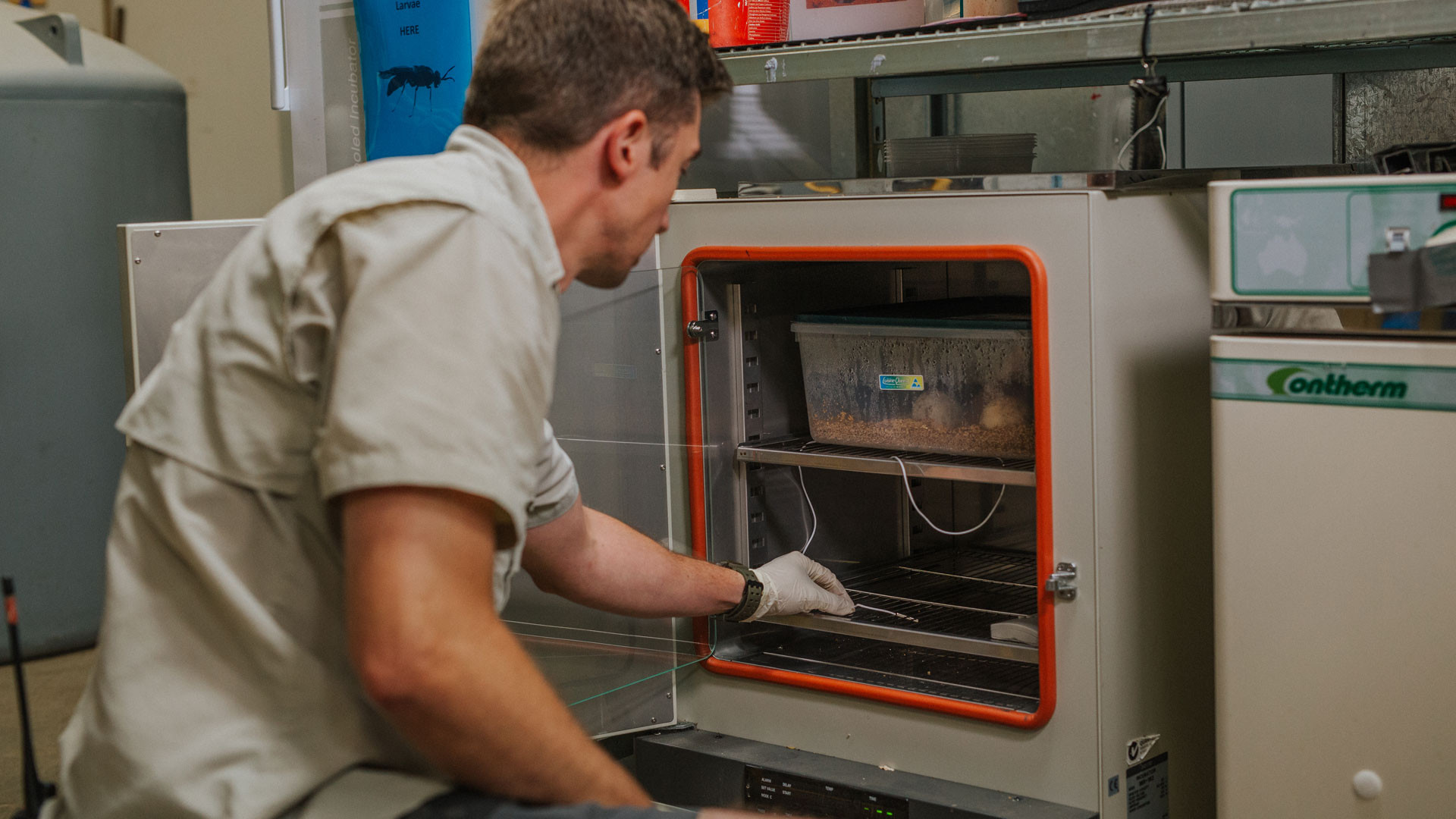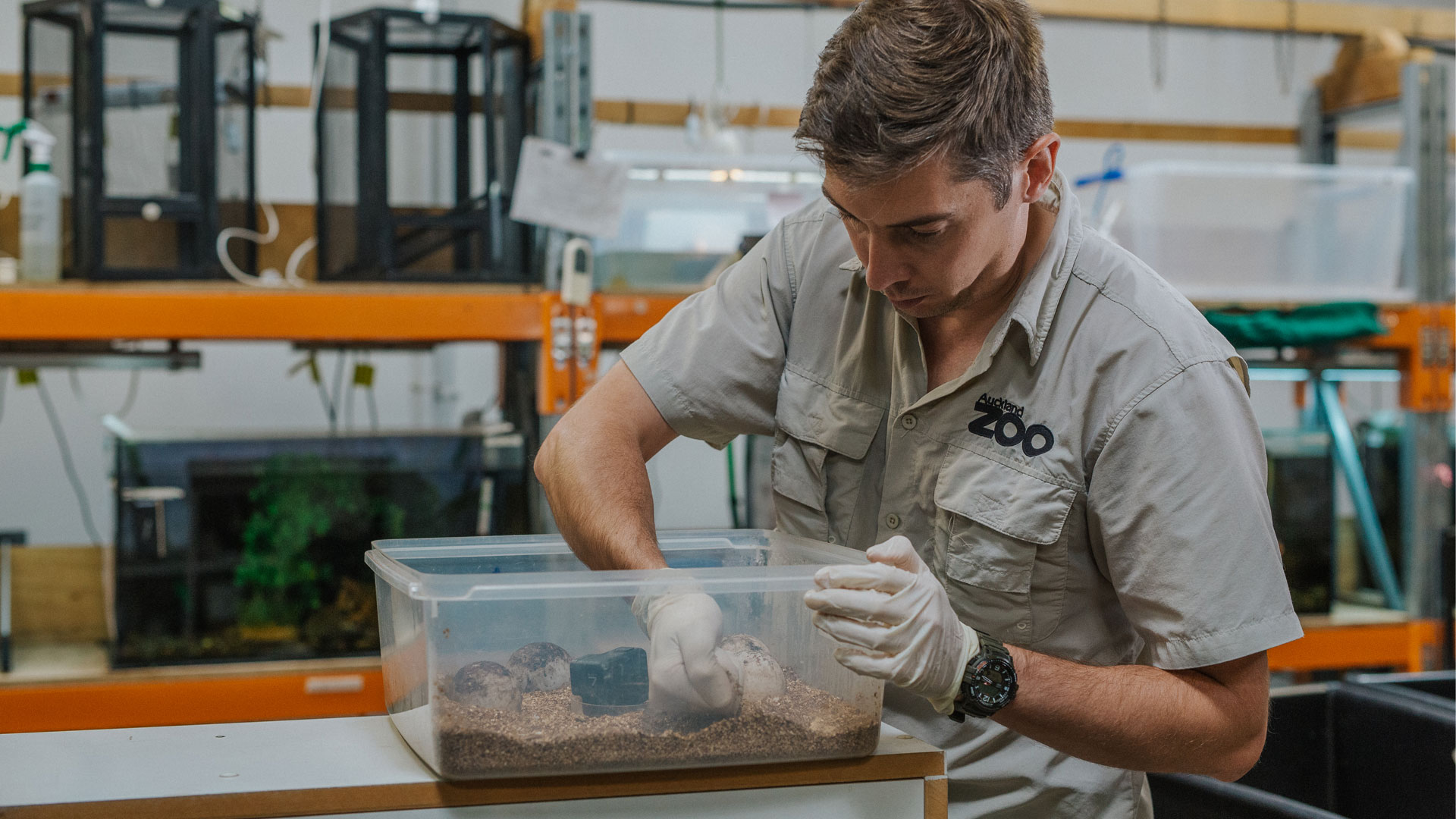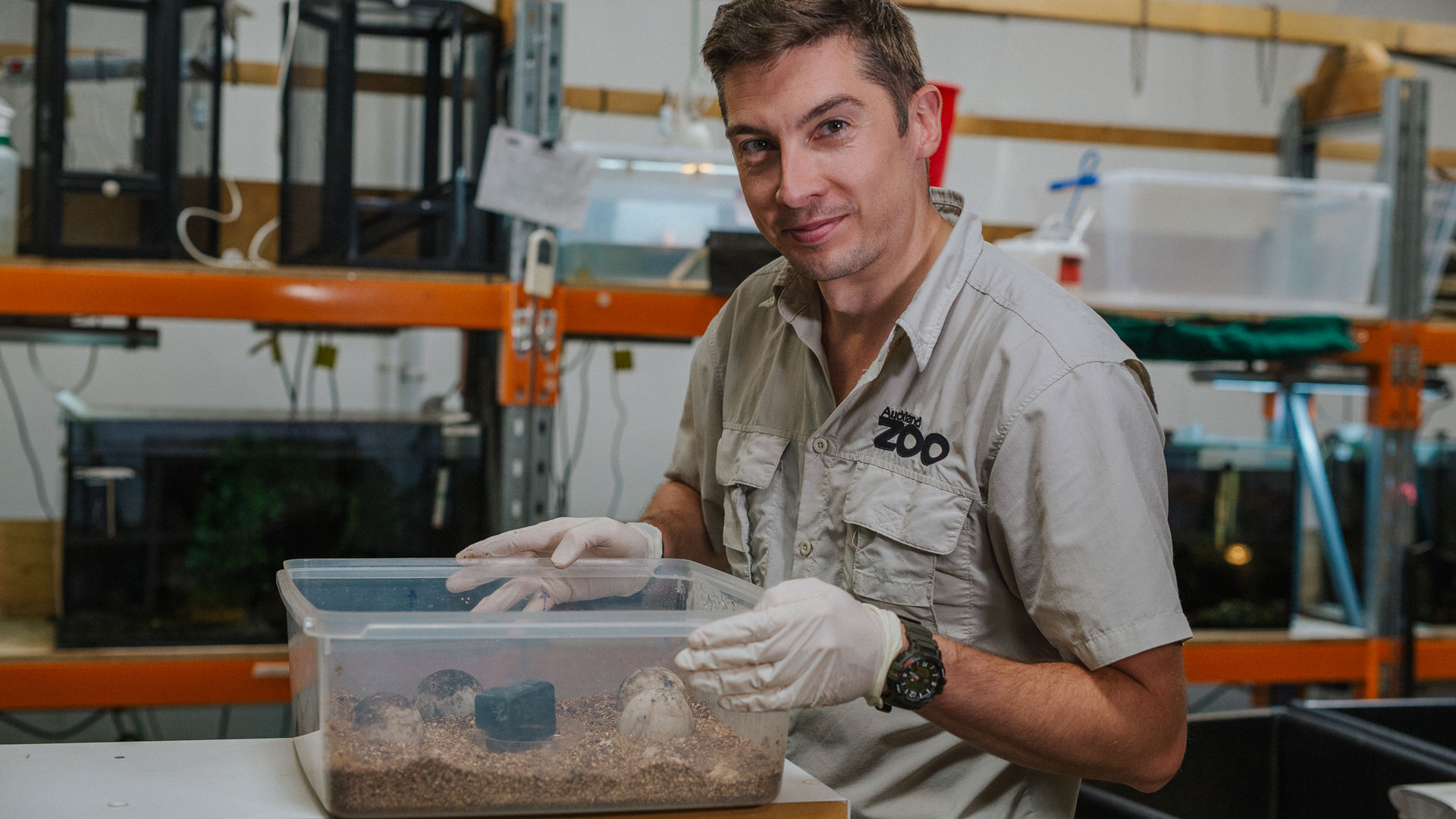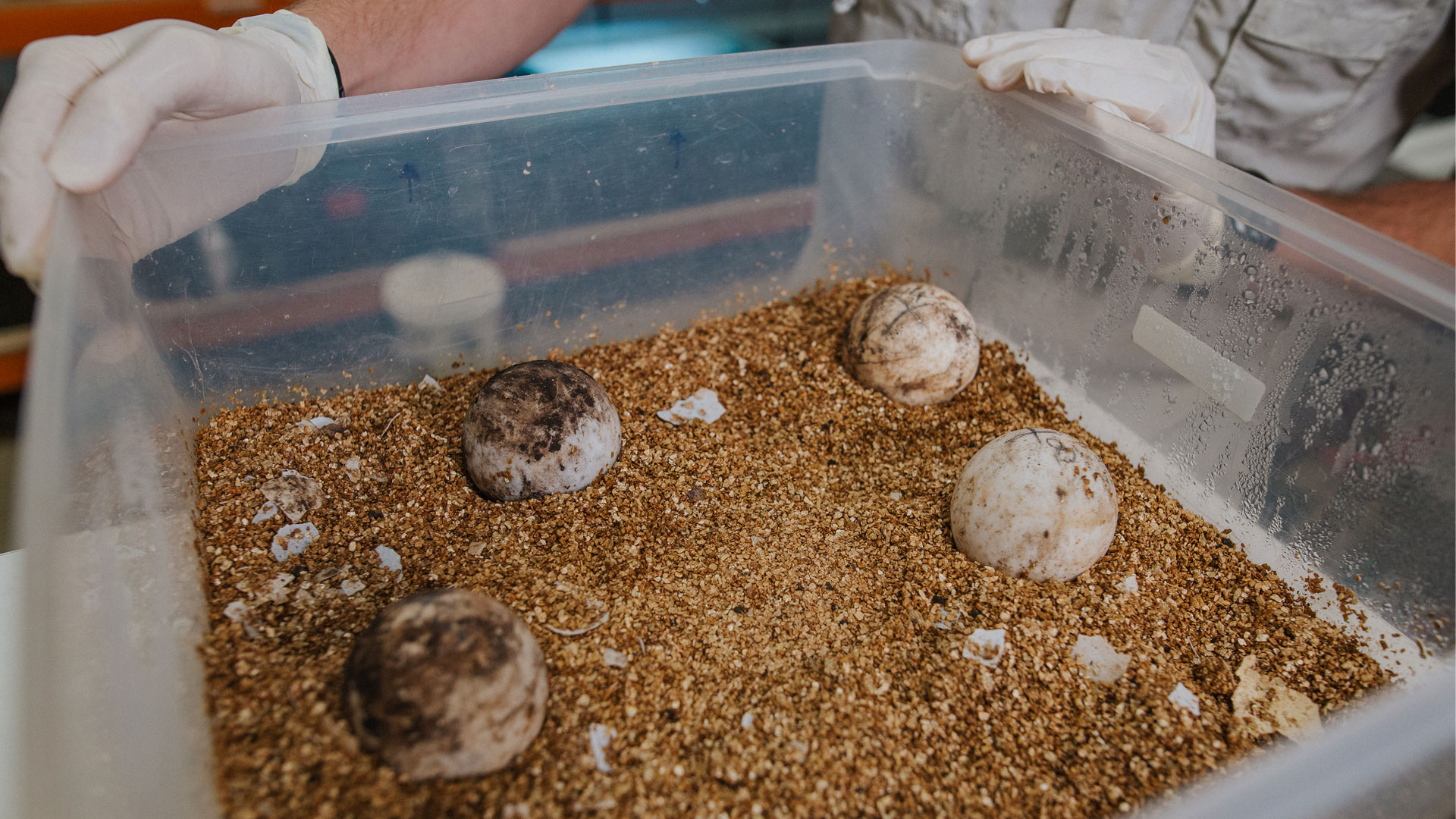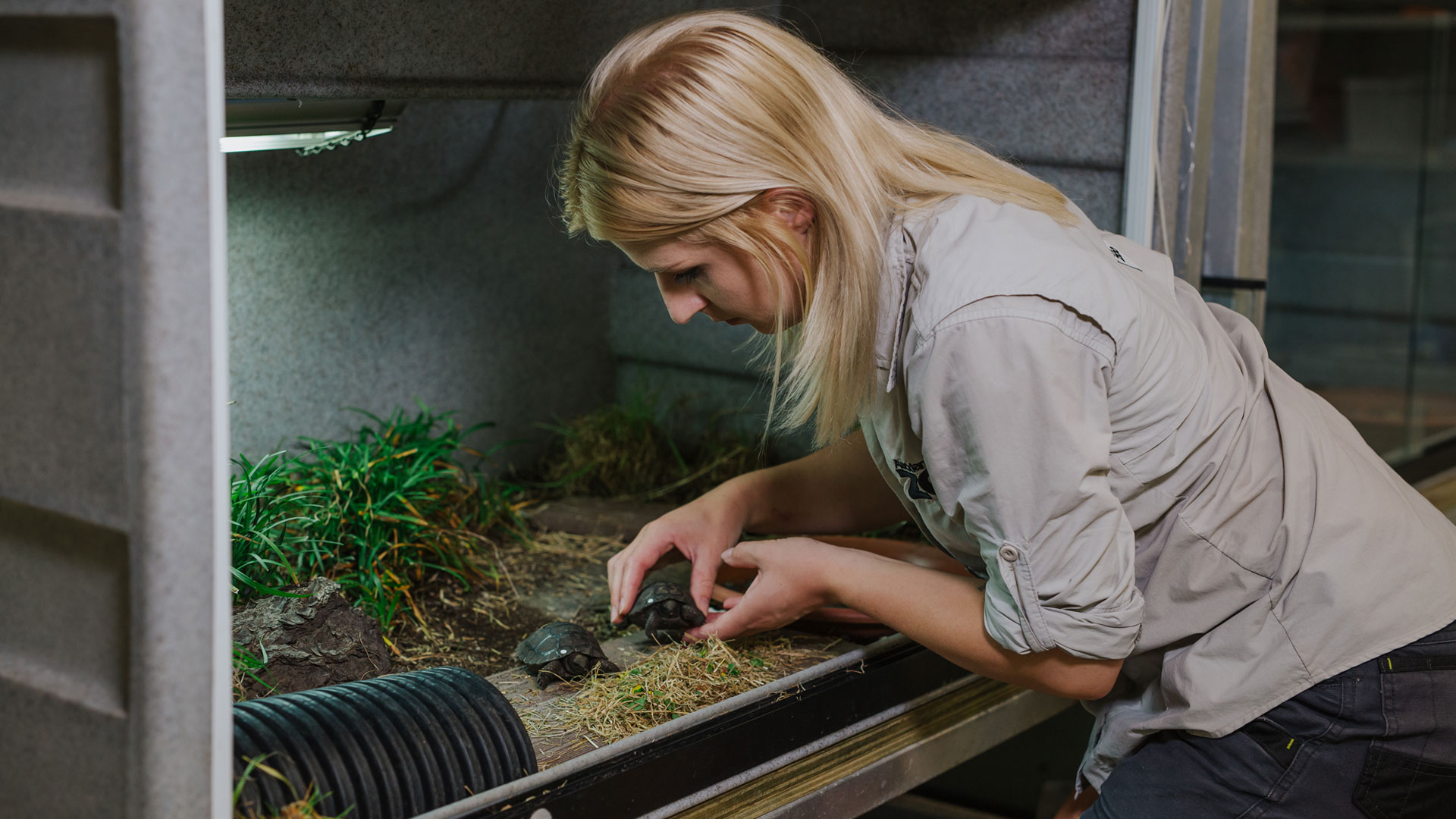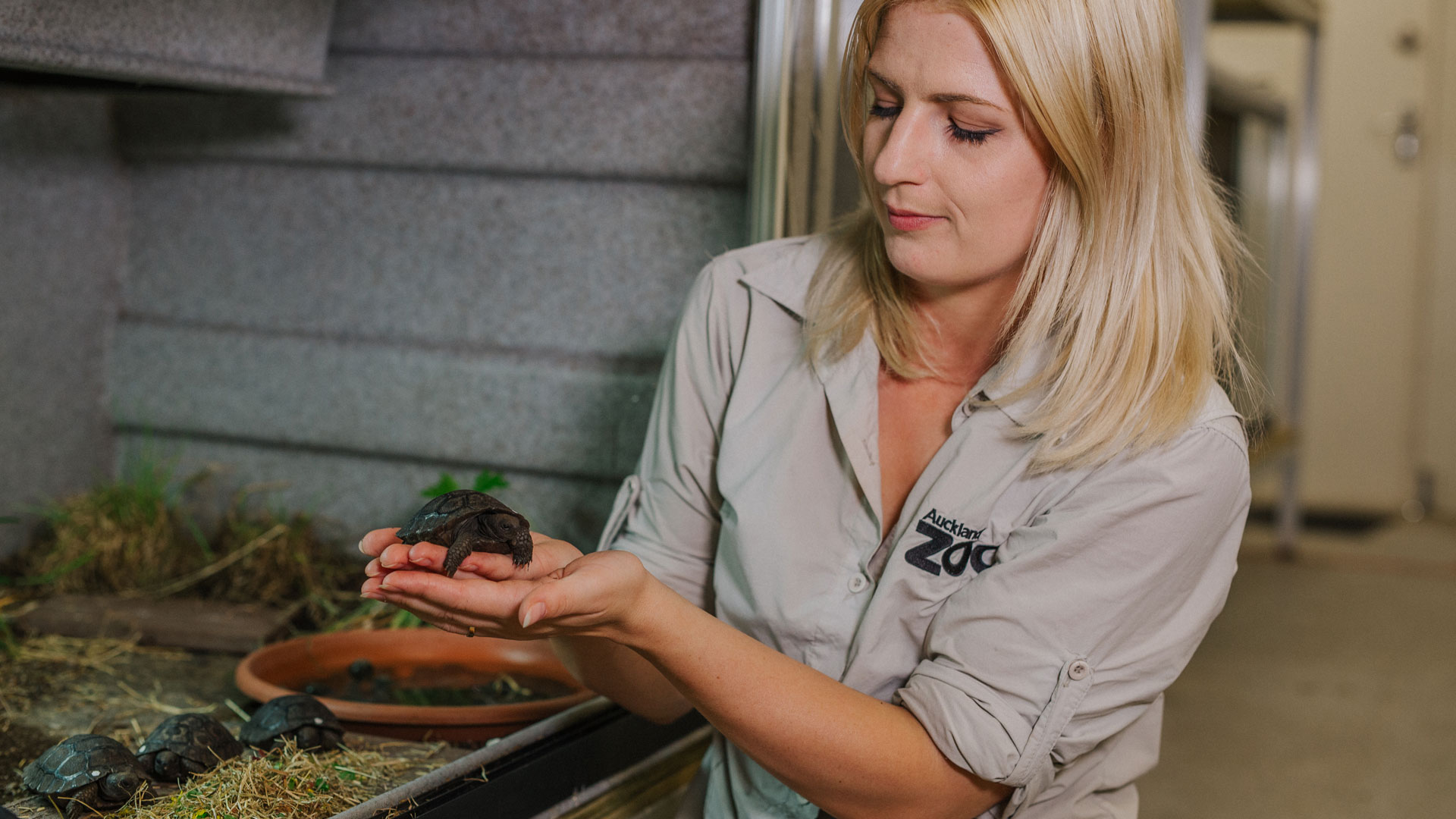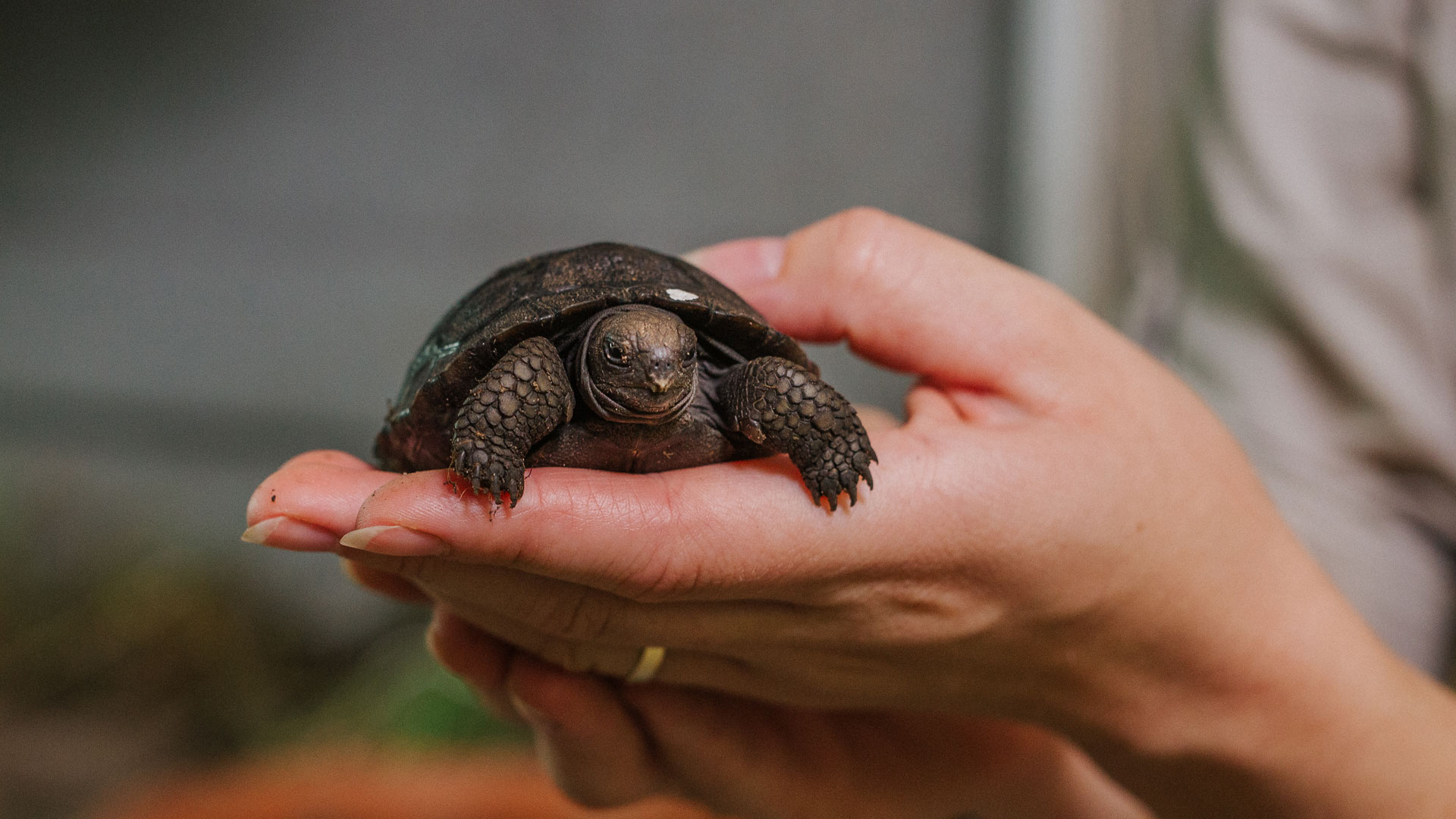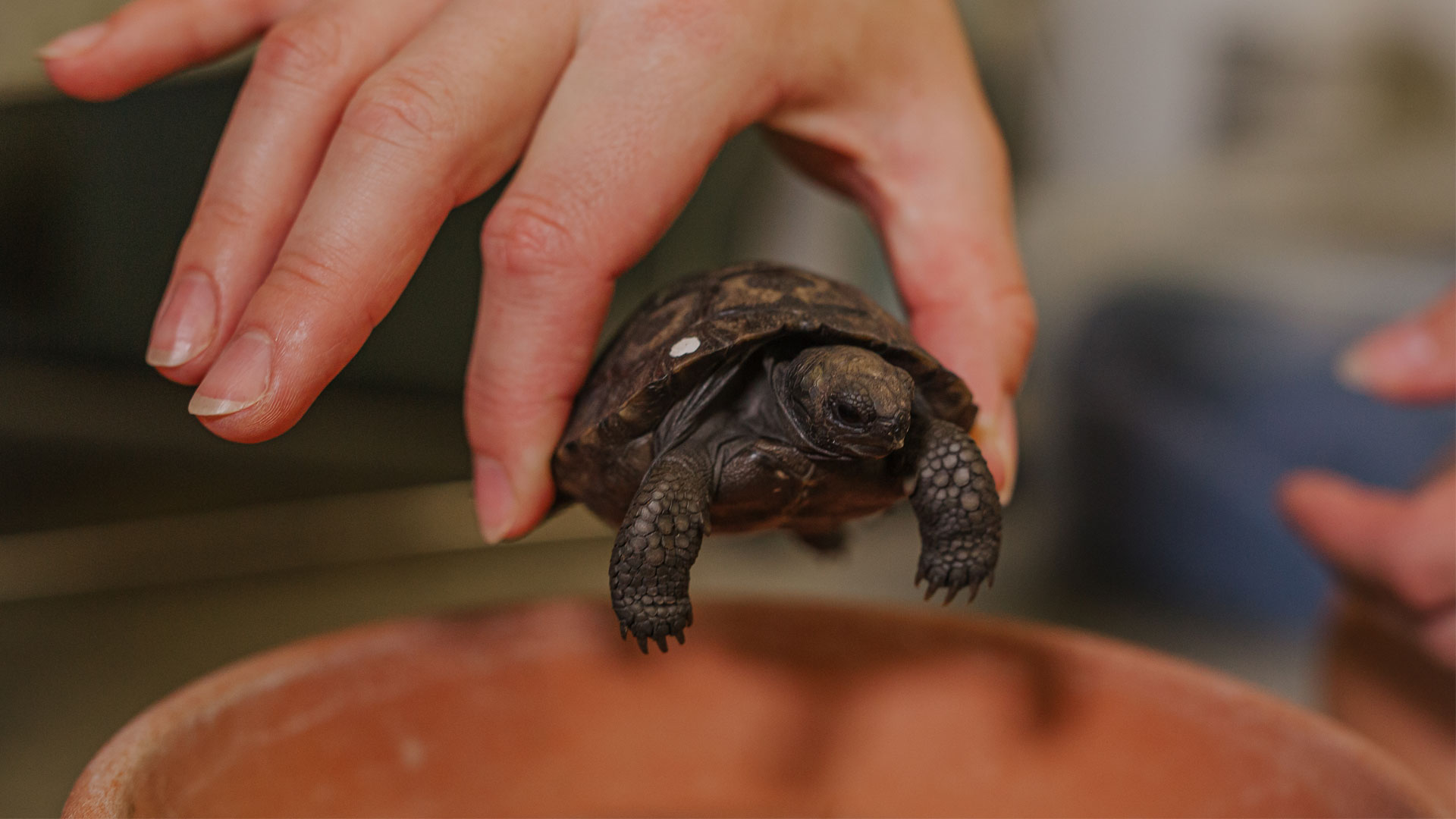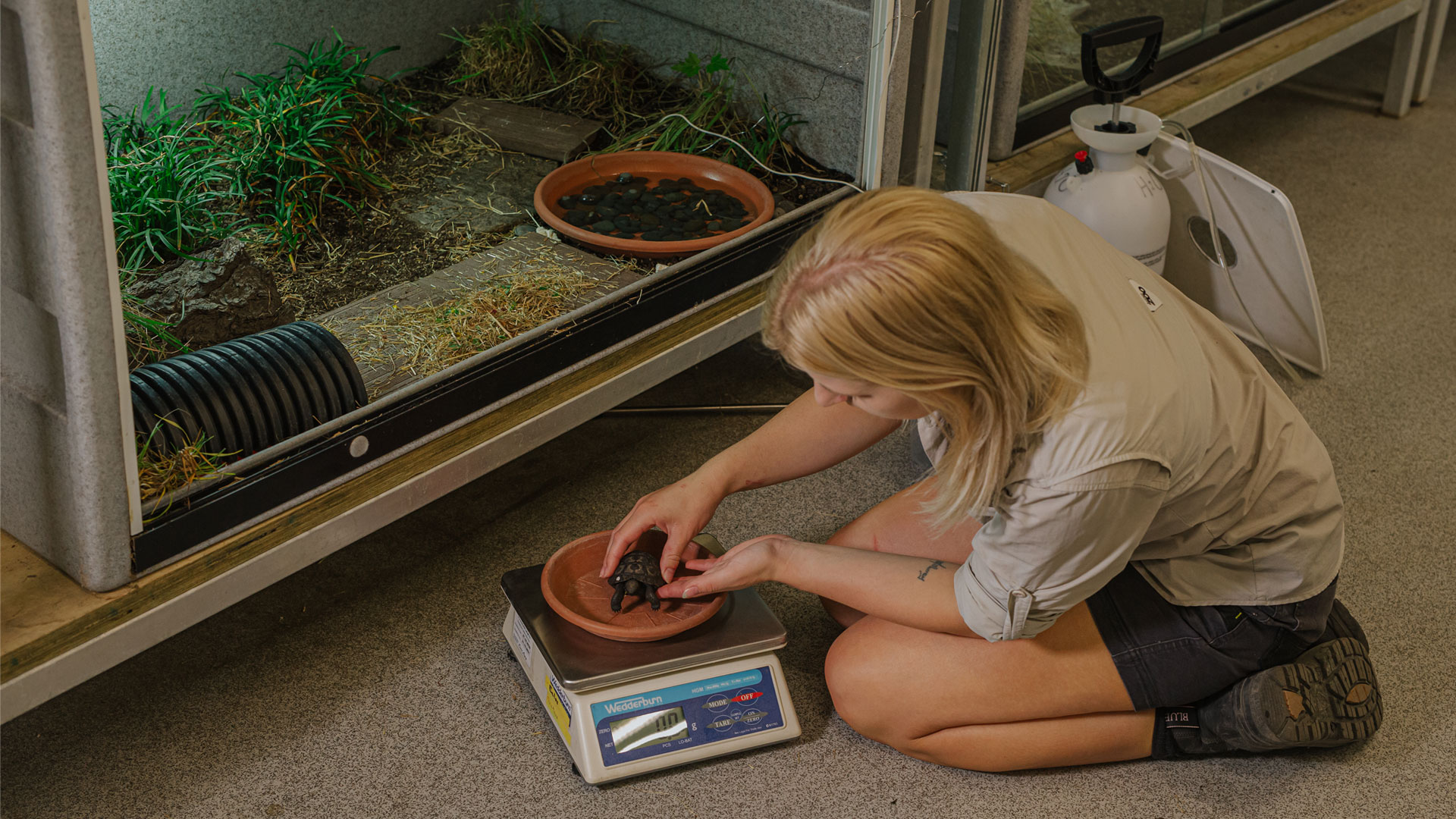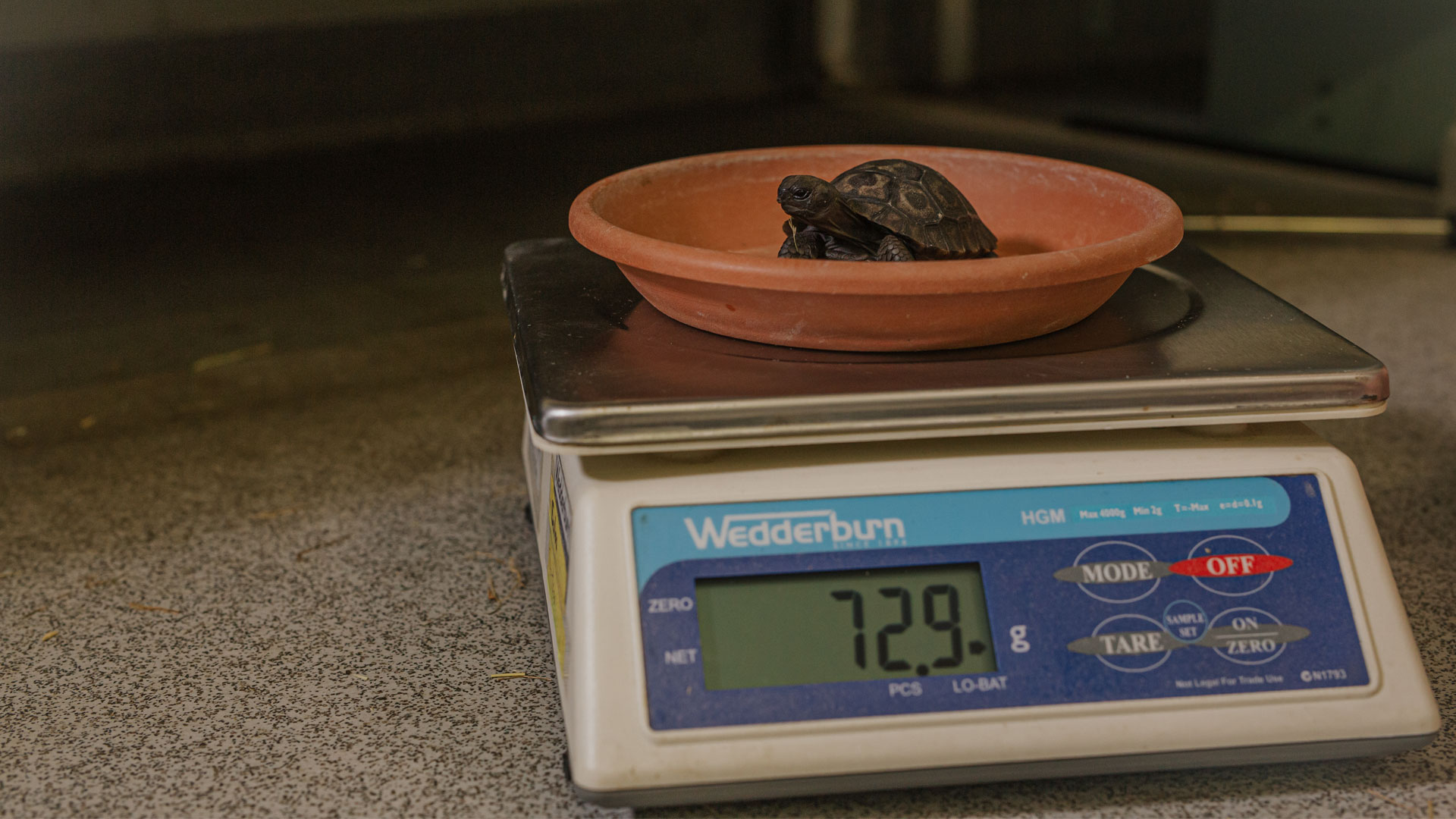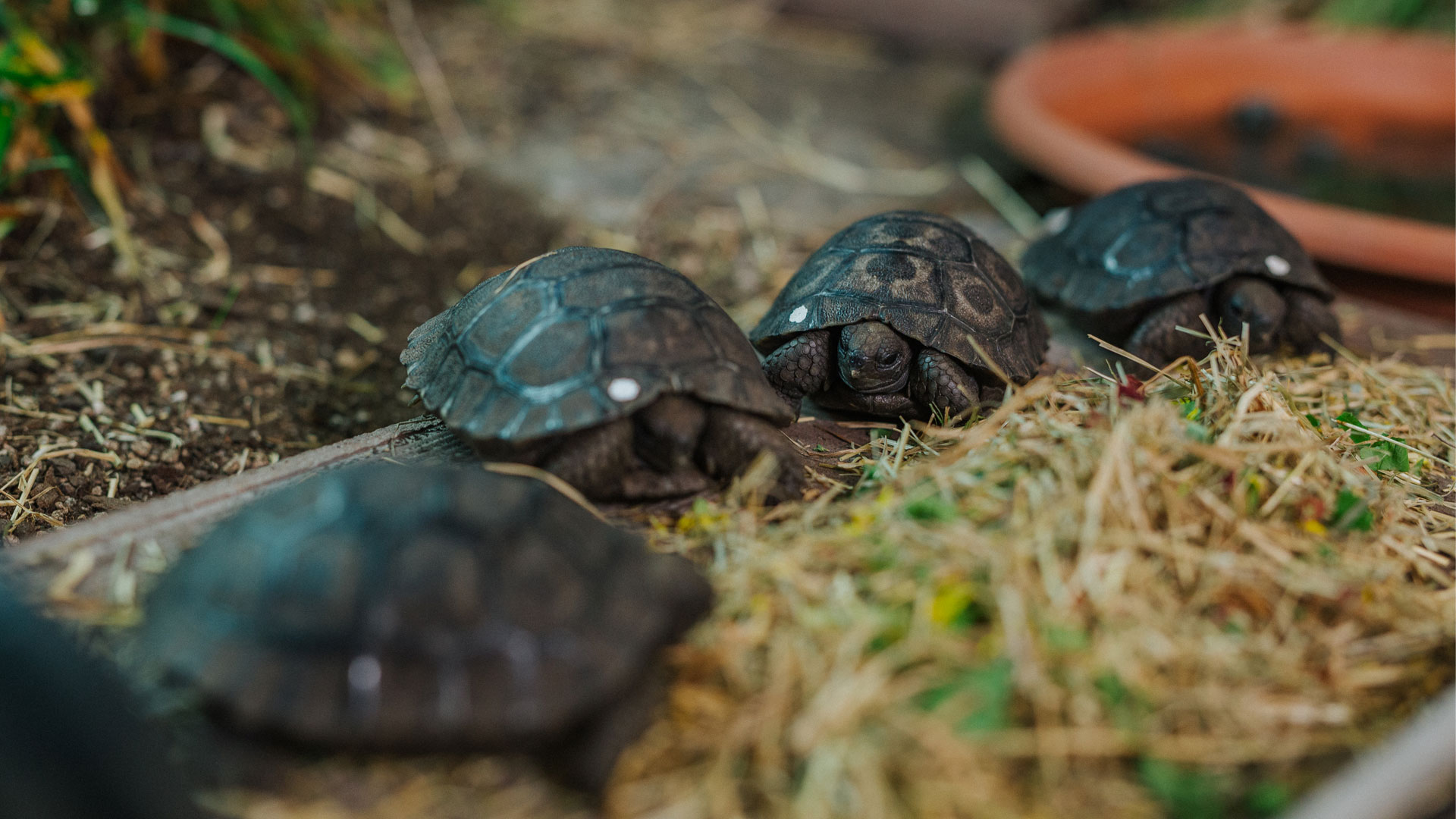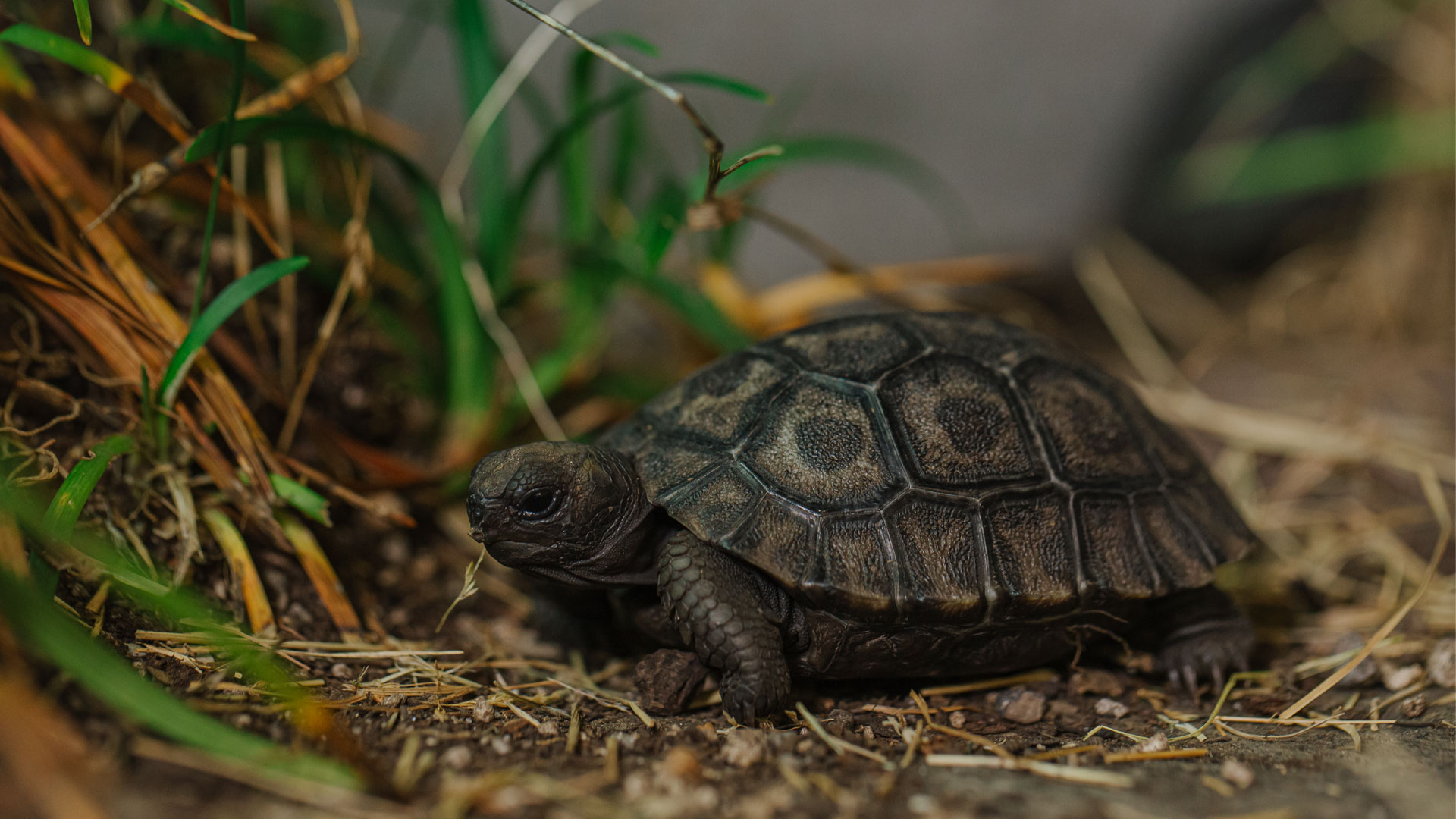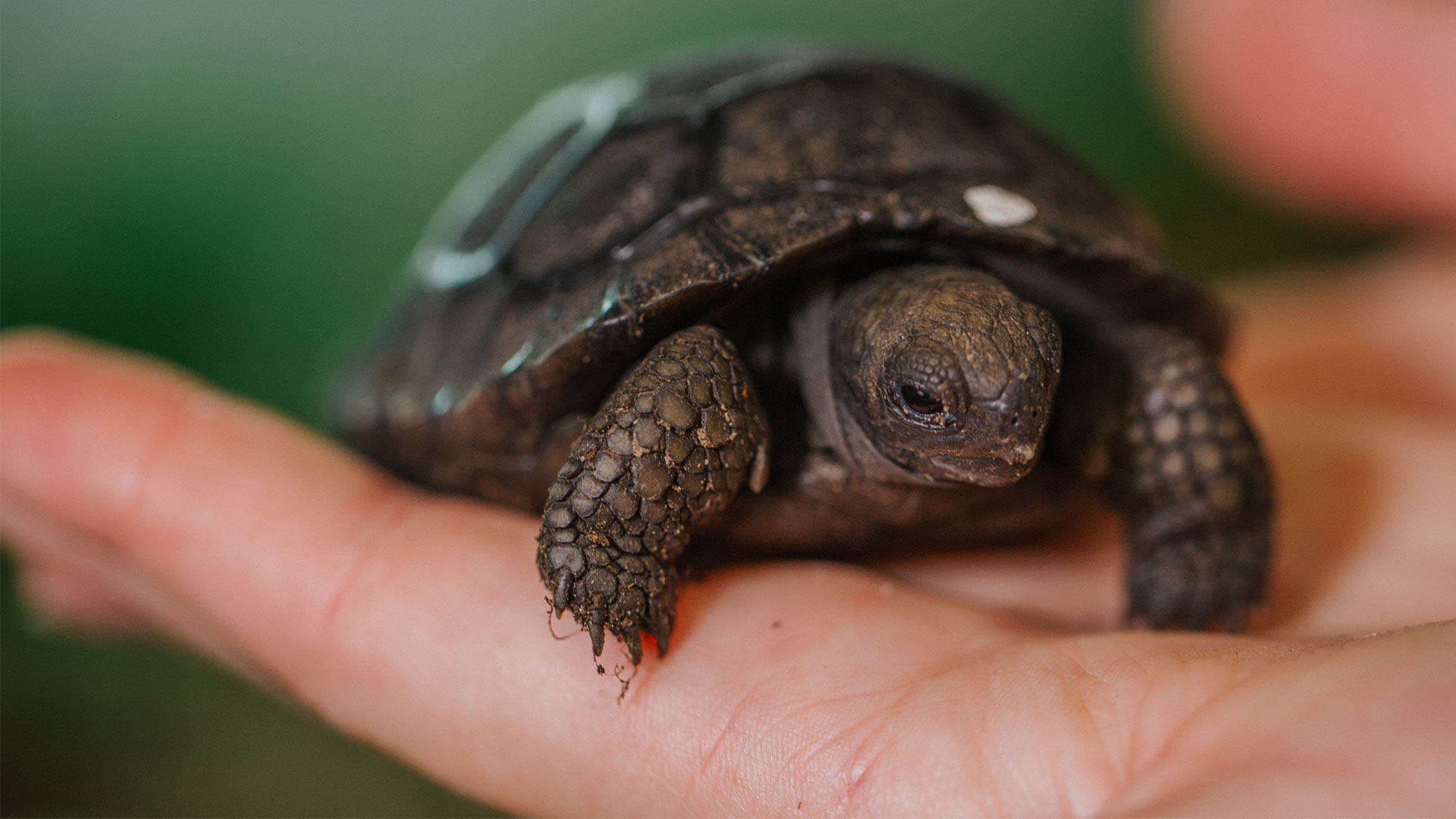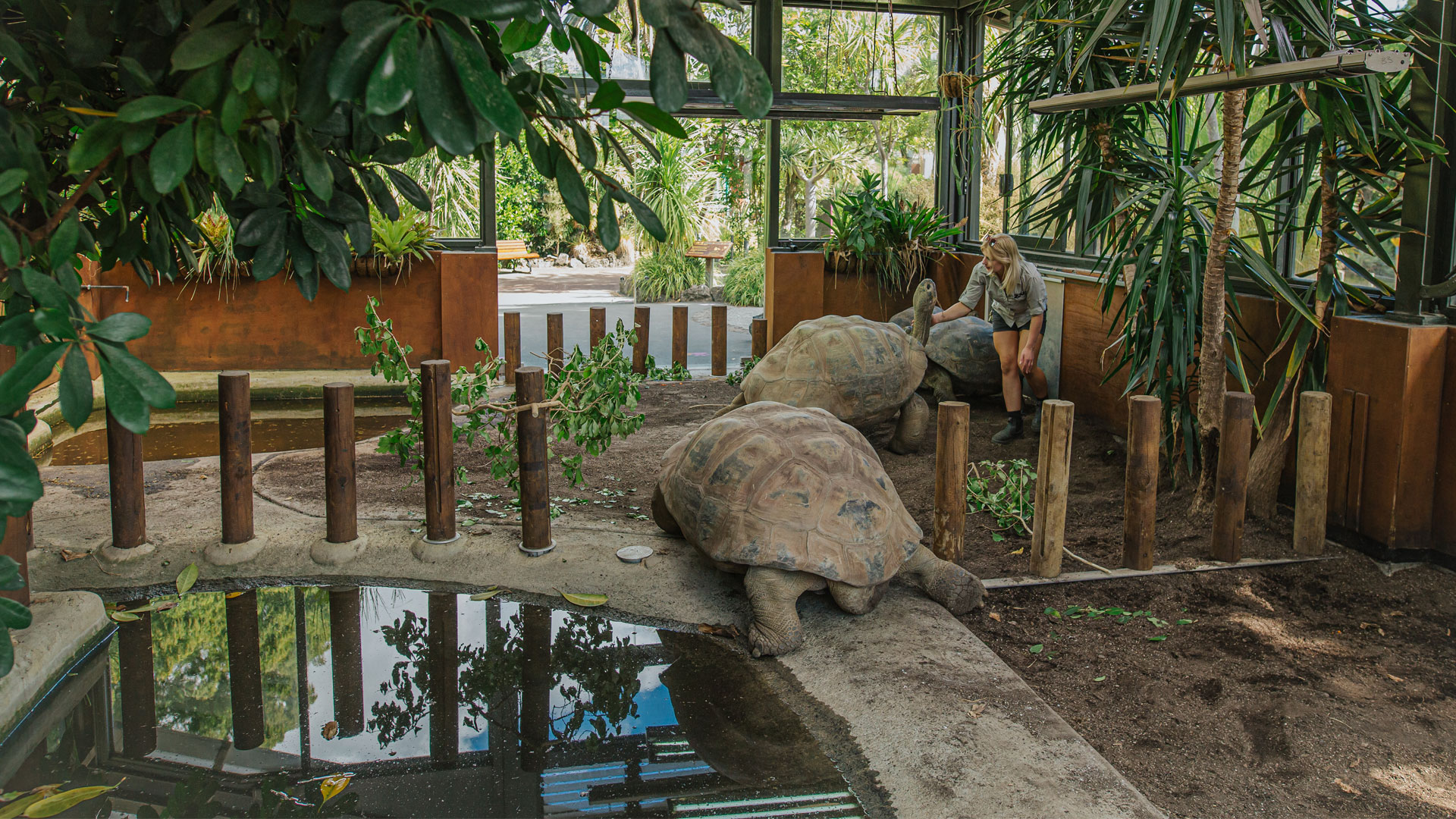Science-based care
The 13 eggs laid last October were delicately excavated by the Zoo’s Ectotherms team with all the care of an archaeological dig, then moved into an incubation environment of 30 degrees centigrade (likely to produce females) and 60-70 percent humidity - replicating wild conditions. After hatching and absorbing their yolks, the four hatchlings were shifted to a miniature habitat that they share together.
“Here they have all the vital environmental elements they need – a temperature gradient from 35°C via an ultra-violet basking lamp down to 22°C at night, and everything in-between, and steady high humidity (they originate from equatorial oceanic islands after all).We’ve provided varying terrain for climbing, fresh grassy bed areas that we spray with tepid water every afternoon and which they love to tuck themselves into to feel safe at night, and an outdoor area for time in the sunshine to gain additional vitamin D3 to aid calcium uptake from their diet,” explains Don.
Described by Don as a “reptilian cow”, Galapagos tortoises require high fibre, moderate protein and low sugar for their digestive health. The hatchlings and adults alike have a diet of chopped hay, and leaves and flowers from plants like dandelion, puha, and plantain. “Like kids, they do tend to gravitate to colourful sweet foods like bright hibiscus flowers and grated carrot. The latter, surprisingly high in sugar, is a rare treat for them that we mix in with their hay to stimulate their appetite”. To aid their hydration/moisture uptake, the hatchlings are also given twice weekly hour-long “bath time” in tepid water.


